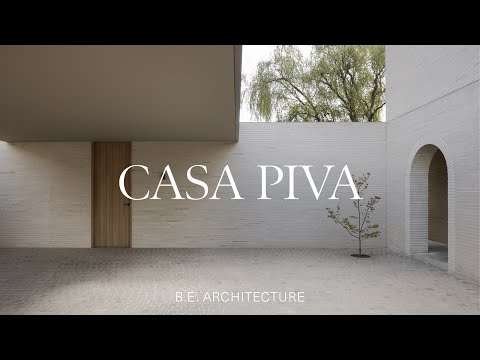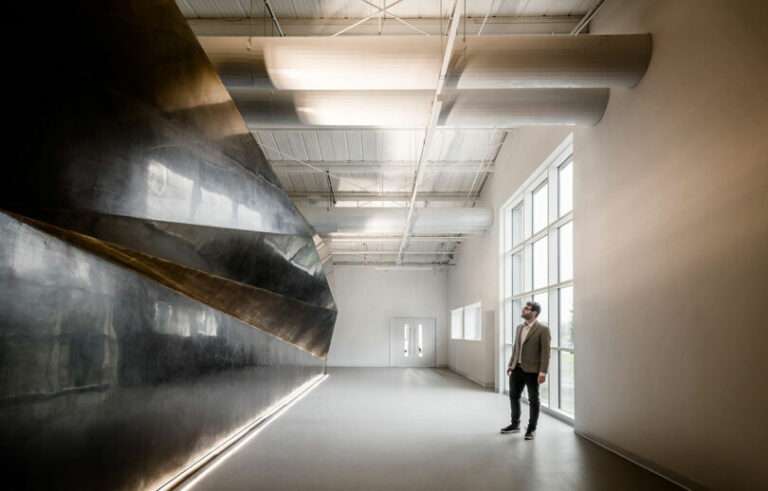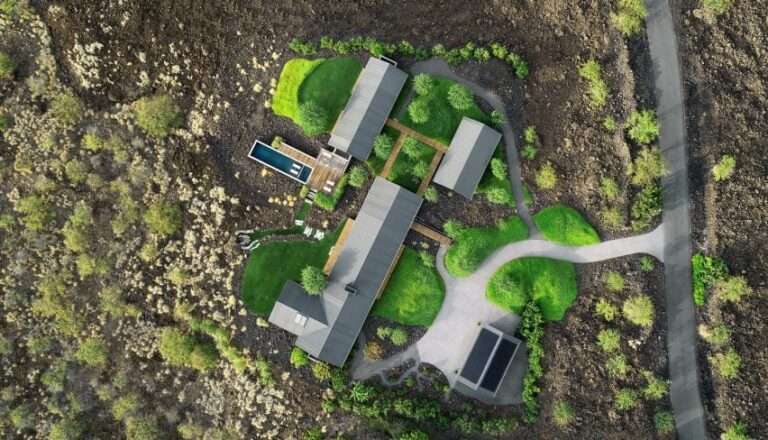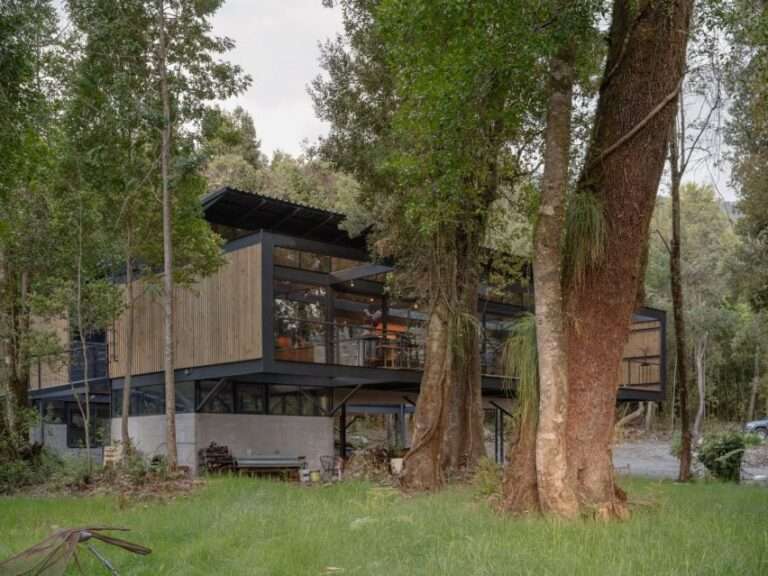
Sorrento Bathhouse is a minimal space located in Sorrento, Australia, designed by Davidov Architects. Light falls through a baffled skylight in the Sorrento Bathhouse, casting geometric patterns across bluestone tiles that shift imperceptibly with the passing hours. It’s this ephemeral quality—the transformation of simple daylight into a material presence—that reveals the true luxury of this coastal retreat. Rather than relying on ornate fixtures or precious materials, the architects have elevated the essential elements of architecture itself: space, light, and proportion.
The bathhouse takes the form of a modest gabled structure, reminiscent of the utilitarian sheds and boathouses that dot the Mornington Peninsula. This vernacular nod is more than mere aesthetic homage; it represents a thoughtful integration of local building traditions within a contemporary wellness context. Positioned beneath the protective canopy of a Tasmanian Red Gum and Moonah tree, the building’s placement demands intention—a short journey from the main house that physically and psychologically prepares visitors for the transition from everyday life to focused relaxation.
Inside, the progression of spaces culminates in a central spa room defined by its pyramidal ceiling, a spatial device that recalls Philip Johnson’s Rothko Chapel while simultaneously evoking the meditative atmosphere of traditional Japanese onsen. This architectural lineage spans continents and centuries, yet feels entirely appropriate to its Australian coastal setting. The careful sequencing of rooms creates what design theorist Juhani Pallasmaa might call an “architecture of the senses”—spaces that engage not just vision but tactile awareness, acoustic quality, and thermal comfort.
The material palette displays remarkable restraint: bluestone tiling continues from interior to exterior spaces, cedar benches provide warm tactile surfaces in wet areas, and moisture-resistant veneered boards soften the overall expression. These material choices reflect both practical durability in a coastal environment and a commitment to sensory richness. As lighting conditions change from day to night, the bathhouse transforms from a light-filled sanctuary to what the architects describe as a “more introspective, cocoon-like quality.”




